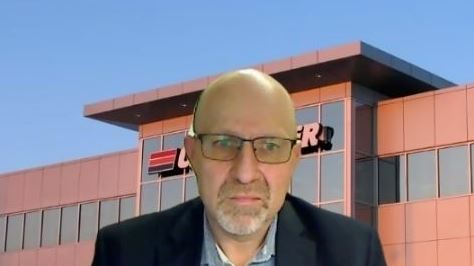Break down internal fleet silos, panelists stress
Every truck fleet needs to address safety, operational and recruiting demands, but Challenger Motor Freight commits to breaking down the barriers between the related departments.
Driver safety coordinators now sit in the fleet’s operations department. And when safety managers raise a concern with a driver, someone from the operations team is involved in the same conversation.

“If safety says something is unsafe, the operations team backs it up,” says Geoff Topping, vice-president – human resources. “It all comes back to communication and alignment.”
Signs of conflicting targets are easy to spot in many fleets. Members of an operations team might offer high fives to a driver who makes every delivery on time, while the safety team criticizes the same driver for Hours of Service violations.
Speakers participating in a webinar hosted by the Truckload Carriers Association (TCA) stressed on Thursday just how important it is to have the different departments sharing common goals.
Central to that common approach is understanding how the outcomes in one department will affect the next, says Tim Smith, president – Pivotal Fleet Solutions. When a recruiting team reduces driver turnover, for example, that leads to more on-time deliveries. A lost-time injury will harm customer service.
It’s not the only way an individual silo can waste time.
“You end up with redundant processes and you get functional actions that are repeated,” Smith explains. “You’ve got to be consistent.”
Even worse, members of the different departments become focused on their internal interests rather than the broader needs. That, he says, erodes confidence.
“When you don’t talk to one another, you’re sending mixed messages to your drivers,” says Hayden Cardiff, the founder and co-CEO of Idelic, which offers a software-based driver management platform.
He offers the example of what happens if a safety department only reaches out to drivers who need to be disciplined. Those at the receiving end of the meetings begin to feel they’re “in for it” every time a safety manager calls.
Such a mindset changes if safety-related challenges are truly approached as coaching events, he says.
Topping admits that the safety department was once viewed as the “penalty box” at Challenger.
“We’ve changed that into a coaching opportunity,” he says. “Everybody wants to do a good job.”
Each department will still have individual goals and targets, of course. That is where the lines can be “blurred a little,” Topping says.
But he still sees an opportunity to set and align clear expectations by giving the different departments some common goals, along with shared missions, visions and values that steer everyone in the proper direction. Short-term goals, when they’re required, should still support corporate goals, and individuals should be supporting departmental goals, Topping says.
The need for the common messaging extends to the driver’s seat as well.
One of the first warning signs of a fractured culture comes when a driver drops a comment like “that’s not what I expected,” Topping explains. If anything, the message needs to be consistent from the moment a driver first talks to a recruiter.
It goes beyond the orientation process that shows how to fill out a form, and includes the broader onboarding process that focuses on different expectations, and follows up with regular check-ins to ensure everything is on track.
Challenger’s mentors and a related coaching program help with that. If a driver has a challenge, they can reach out to people who have similar experience. If the mentors don’t have an answer, they commit to finding someone who can fix the challenge. It’s just one of the steps meant to retain those behind the wheel.
“Retention doesn’t just affect us as a company,” Topping adds. “It also affects those people.” The driver who leaves has to go home and tell their family that they’re out of work.
“We have to remember there’s people at the heart of it and take care of it.”
As odd as it may sound, technology can offer one of the solutions to make those human connections. It’s about recording the information gathered every step of the way.
“It’s critical that information is shared because you’re talking about the whole person,” Topping says.
Cardiff offers the example of recording the name of a spouse. When following up with a new recruit to see how they are adjusting to a job, the questions aren’t generic. They help to ensure managers can ask about a spouse by name.
“It’s something that will blow those drivers’ minds,” Cardiff says.
“What has to be recognized is this is not an operations thing, it’s not a safety thing, it’s not a recruiting thing,” Smith says of the entire process. “It’s a culture thing.”
And everyone shares in the culture.
Have your say
This is a moderated forum. Comments will no longer be published unless they are accompanied by a first and last name and a verifiable email address. (Today's Trucking will not publish or share the email address.) Profane language and content deemed to be libelous, racist, or threatening in nature will not be published under any circumstances.
I quit a lot of companies because of the culture and double-talk… Where safety says one thing and dispatch expects other things… And when I speak up, I get chastized. I really hope that’s an initiative that has substance and not ‘to make outsiders looking in’ feeling good… Because the realities of trucking versus office are two different beasts.